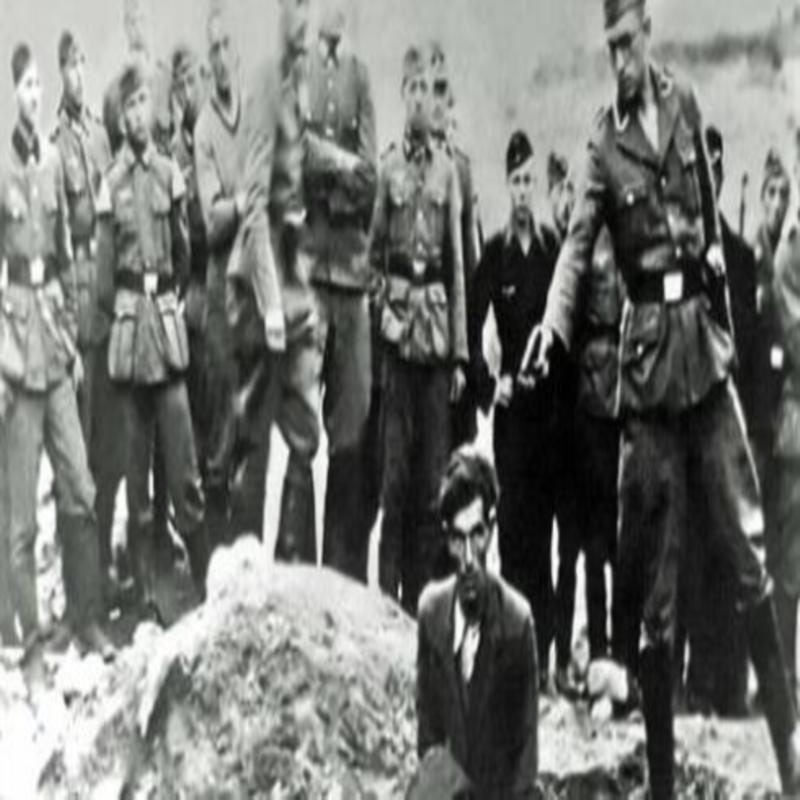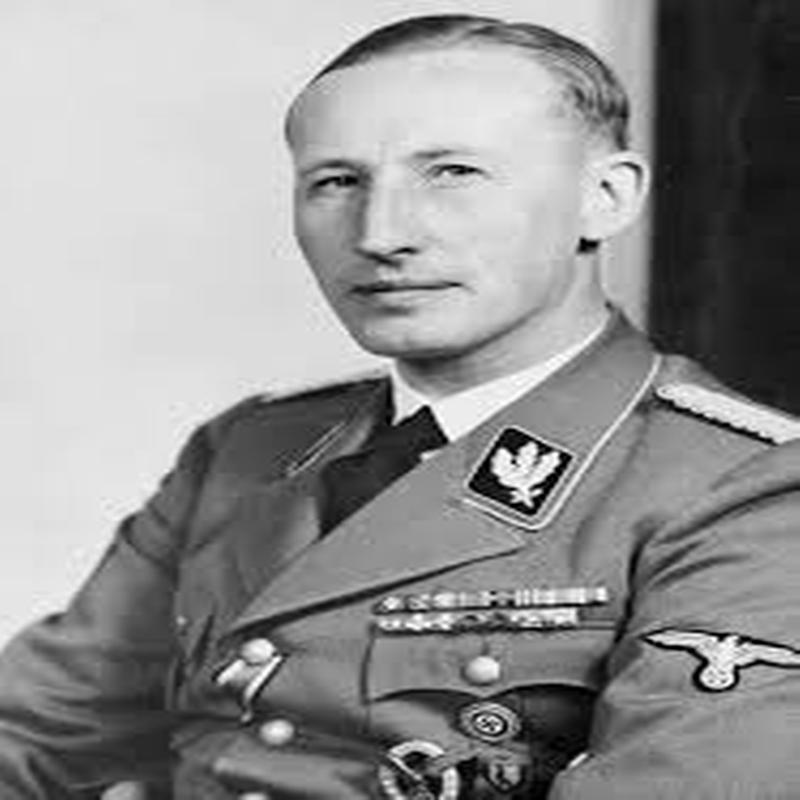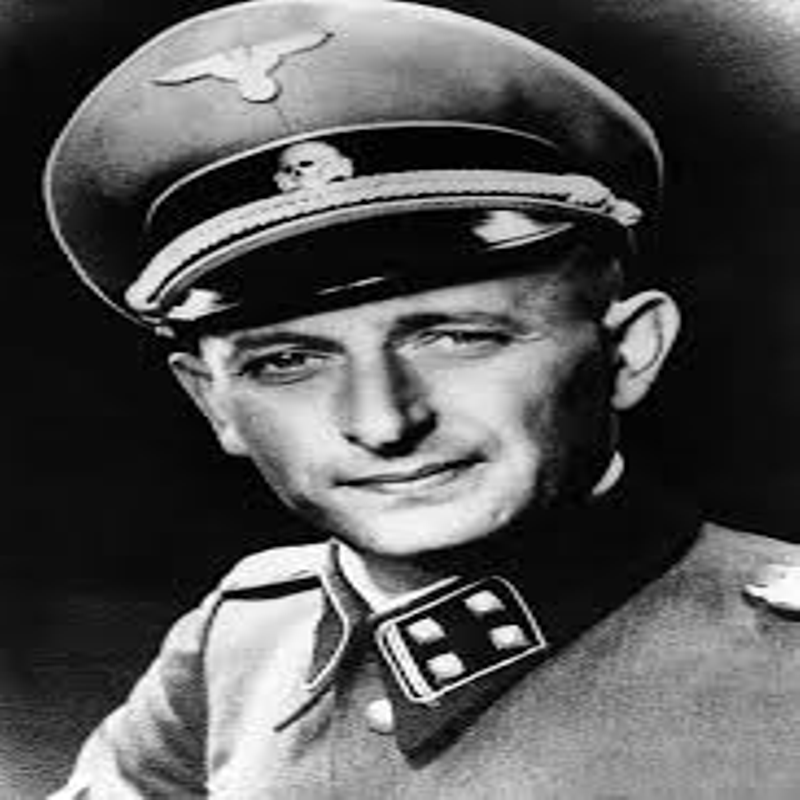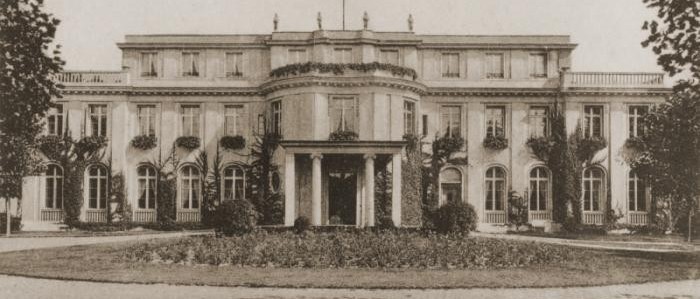Wannsee Conference
Posted on 8th June 2021
On 20 January 1942, a bitterly cold day in the prosperous lakeside suburb of Wannsee in Berlin, fifteen leading Nazi’s met over a sumptuous buffet lunch to discuss the eradication of an entire people. For them this was not a moral issue but merely one of policy.
Earlier in December 1941, the German advance into Russia had stalled outside Moscow and a fierce counterattack had forced the Germans into a hasty retreat. That same month on 7 December, the Japanese had launched their surprise attack upon the United States Pacific Fleet stationed at Pearl Harbour. Four days later Hitler declared war on the United States.
On 12 January 1942, the General who had been entrusted with renewing the assault upon Moscow, Walter von Reichenau, died of a heart-attack. For the first time since September 1939, the tide of the war seemed to be turning against the Germans and with any prospect of a swift victory at an end the time had come to resolve the Jewish Question once and for all.

Following the conquest of Poland, the Jews had been rounded up and forced into ghettos in Warsaw, Lodz, and elsewhere. In the meantime, the Einsatzgruppen or Nazi Death Squads, had been busy exterminating hundreds of thousands of Jews in the Baltic States but this was a slow process and for the Germans not sufficiently cost effective. Also, the murder of women and children was having a morale sapping effect on some of the troops involved. So, a more efficient solution had to be found and the man charged by Hermann Goering to find that solution was Reinhard Heydrich, Head of the Reich Security Main Office, and Heinrich Himmler’s Deputy.
Heydrich was a cold bloodless bureaucrat and one of the most feared men in the Third Reich who as Protector of Bohemia and Moravia had proven himself to be both an efficient administrator and ruthless in his pursuit f power. Many believed that he was being groomed as Hitler’s successor. It was also widely rumoured among leading Nazi’s that he had Jewish blood (his father it was said) though it was a rumour rarely expressed within earshot.

Heydrich now summoned representatives from all the Reich’s main Ministries and Organisations that dealt with issues relating to the Jewish Question to meet at Wannsee.
The Conference itself was arranged and organised by Heydrich’s right-hand-man for Jewish Affairs, Colonel Adolf Eichmann, whose understanding of the minutiae of administration and eye for detail he found invaluable.
Heydrich opened the meeting by congratulating all present on those anti-Jewish measures they had already undertaken. In particular, they should all thank Dr Wilhelm Stuckart, the co-author of the Nuremburg Laws for having effectively removed the Jew from all aspects of German political, religious, and civil life. The law alone was not enough however, and it was now time to deal with the Jewish Question once and for all. This was why they had all been called to the meeting and their agenda was to find how best to do this and how it could be most readily achieved. He went on to explain:
“Under proper guidance, in the course of the final solution the Jews are to be allocated for appropriate labour in the East, separated according to sex, they will be taken in large work columns to these areas for work on roads, in the course of which action doubtless a portion will be eliminated by natural causes; the possible final remnant, since it will undoubtedly consist of the most resistant portion, have to be treated accordingly, because it is the product of natural selection, and would, if released, act as the seed of a new Jewish revival.”
There were none present who were left in any doubt what ‘Final Solution’ meant, though Heydrich chose his words carefully: Evacuation referred to the enforced transportation of Jews to Concentration Camps; Elimination by natural causes meant death by disease and starvation; Treated accordingly, referred to execution by firing squad and gas chamber.
As Heydrich went on to explain, with the war having no end in sight resources would become scarce and food stocks insufficient to maintain these people any longer. They had to be eradicated and the most efficient and cost-effective way of doing so was by means of the gas chamber. This process had earlier been tested on the disabled, the mentally impaired and Soviet prisoners of war using gas trucks under the remit of the T4 Euthanasia Programme.
All Jews would be sent to Concentration Camps in the East where mothers would be separated from their children with those deemed fit to work required to do so. Others – the aged, the sick, the very young and those considered a burden in any way would be disposed of with immediate effect. All evidence of the work of the Concentration Camps would be destroyed with the corpses burned at the on-site crematoria.
The number of Jews to be disposed of was broken down country by country and included those currently occupied by Germany and those which they expected to occupy in the future. In total they calculated that there were more than 11 million men, women and children requiring evacuation. This would take a great deal of hard work, he said, but reiterated that it could and would be done. Discussion now turned to what defined a Jew and who may or may not warrant an exemption.
Complications arose concerning those of mixed blood, those with maybe one Jewish grandparent, and the children of those Jewish men who had married a non-Jewish woman. These were to be considered half-Jew or mischling. Also considered for exemption were those Jews who donated substantial amounts of money to the Nazi Party during its formative years and highly decorated war veterans. They even considered whether those half-Jewish who had predominantly Aryan features should be treated differently to those who were more obviously Jewish.
In the end Heydrich brought what he was obviously finding a tiresome discussion to a conclusion by deciding that they were all to be considered Jewish and liable to evacuation. In the case of the elderly who had provided exceptional service to the German State, they would be permitted to expire in the Camps, most likely Theresienstad, of natural causes. Others would be judged on a case-by-case basis and if found to be exempt would instead be sterilised.
Reinhard Heydrich was not a man to be argued with and using a combination of charm and intimidation so it would prove.
Dr Friedrich Kritzinger, representing the Reich Chancellery displayed his dismay by trying to resign his post soon after the meeting, and Dr Wilhelm Stuckart insisted that forced sterilisation of all Jews should be the preferred policy. But Adolf Eichmann remembered there being little opposition to what Heydrich was suggesting.
The Final Solution had become policy and the decision to murder an entire people had been made in a meeting lasting barely 90 minutes. By doing so, Heydrich had not only stamped his authority on the others present thereby cementing his own power within the Nazi hierarchy but had implicated all other Government Ministries in what was clearly, a criminal act.
All those present had been sworn to secrecy and Eichmann edited the minutes of the meeting using the heavily coded language that had been decided upon earlier and he later revealed that the obscene jokes and coarse language used during the meeting were not reflected in his final report. Each of the representatives in attendance was presented with a protocol outlining in detail what had been decided upon. They were then ordered to memorise and destroy it.
The details of the Wannsee Conference were only stumbled across by accident when a copy of the protocol was found by the Americans in the papers of Reich Minister Martin Luther in 1947. These details were later elaborated upon by Friedrich Kritzinger and Adolf Eichmann at their subsequent trials.
Despite Heydrich’s own death on 4 June 1942, from wounds following an assassination attempt his plans were to be implemented in full and the man who ensured that this would be so was his Deputy for Jewish Affairs, Adolf Eichmann.

Jews were rounded up throughout Occupied Europe and sent to the Extermination Camps at Auschwitz, Chelmno, Belzec, Majdanek, Treblinka, and Sobibor. Even as the war entered its final stages Eichmann remained ruthlessly committed to his murderous project cajoling his superiors to ensure the policy was maintained, bullying those he could into carrying out his orders and even appropriating rolling stock vital to the war effort to ensure Jews continued to be transported to the Camps in the East.
As the Red Army advanced and these Camps came under threat of capture in an effort to hide the evidence of genocide the surviving prisoners were ordered to dig up and burn the bodies of earlier victims. But even now the Final Solution was to be relentlessly pursued as the remaining prisoners were force-marched west.
In total, some 6 million Jews, along with Gypsies, Soviet prisoners-of-war, Priests, Jehovah Witnesses, Homosexuals and political opponents of the regime were starved and beaten to death, died of disease, shot or sent to the gas chamber.
Those who attended Wannsee and put their name to this policy of genocide were:
Reinhard Heydrich (Reichsfuhrer SS): Returned to govern Bohemia where he soon gained the reputation as the “Butcher of Prague.” On 27 May 1942, he was seriously wounded in an assassination attempt and died just over a week later.
Adolf Eichmann (Gestapo): He continued the work that had been assigned him at Wannsee, something he considered a matter of honour. He escaped from Germany following the end of the war and with the help of the Catholic Church settled in Argentina. It was there in May 1960, working under the assumed name of Ricardo Klement that he was tracked down and kidnapped by Mossad, the Israeli Secret Service. Transported to Tel Aviv he was charged with war crimes, convicted, and hanged on 31 May 1962.
Dr Friedrich Wilhelm Kritzinger (Reich Chancellery Office): During the Nuremburg Trials he publicly declared himself ashamed of Nazi atrocities. He was subsequently cleared of all charges relating to war crimes for lack of evidence. He died of natural causes a year later in 1948.
Dr Wilhelm Stuckart: who had helped frame the anti-Jewish Nuremburg Laws of 1935, was arrested on charges of war crimes. He was an enthusiastic anti-Semite and Jew-baiter but the evidence that he had been directly involved in any criminal activity was slight and he was released from imprisonment in early 1949 due to time served. He died in a traffic accident on 15 November 1953.
Dr Joseph Buhler (Polish Central Government): was captured in Germany at the end of the war and extradited back to Poland where he was executed for war crimes in August 1948.
Dr Roland Friesler (Ministry of Justice): known as the “Hanging Judge” he presided over the trials of those accused of participating in Operation Valkyrie, the plot to assassinate Hitler where his hysterical denunciations of the conspirators were shown in German cinemas the length and breadth of the country. As the Chief Justice of the People’s Court he had earlier sentenced Sophie Scholl and the other young members of the White Rose Peace Movement to be executed by guillotine. He died in an Allied air raid on Berlin on 3 February 1945.
Otto Hoffman (Race and Re-settlement Main Office): was sentenced to 25 years imprisonment in 1948 but served only 6 before being released. He went on to work as a clerk. He died on 31 December 1982.
Dr Gerhard Klopfer (Nazi Party, representing Martin Bormann): was indicted for war crimes but released for lack of evidence. He worked post-war as a tax advisor, dying on 29 January 1987.
Dr Rudolf Lange (SS Einsatzgruppen Commander): was killed in action near the Polish town of Poznan in February 1945.
Dr Georg Leibbrandt (Ministry for the Occupied Territories): The case against him for war crimes was dismissed in 1950. He later moved to America where he pursued a successful academic career. He died in Cologne, Germany, on 16 June 1982.
Dr Alfred Meyer (Reich Ministry for the Occupied Territories): Committed suicide on 11 April 1945.
Erich Neumann (Ministry for the Four-Year Plan): Interrogated by the Allies at the end of the war he was released due to ill-health. He died on 23 March 1951.
Martin Luther (Reich Foreign Ministry): was arrested in 1943 for conspiring against his superior Joachim von Ribbentrop and sent to Sachsenhausen Concentration Camp. He was freed by the Red Army in March 1945, but died of a heart-attack soon after.
Heinrich Muller (SS Gestapo): Was last seen alive in Hitler’s Bunker and is believed to have been killed attempting to escape on the night of 30 April 1945.elieved to have been killed attempting to escape on the night of 30 April, 1945.
Share this post:





